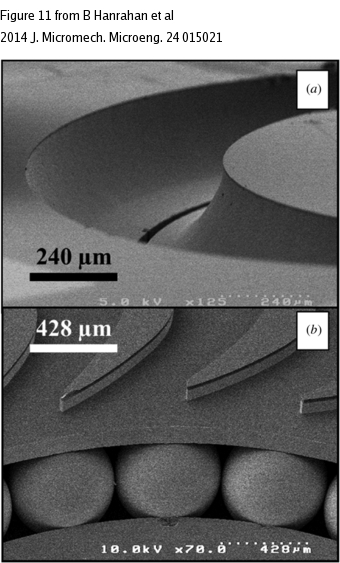News Story
Ph.D. candidate Brendan Hanrahan wins silver medal in ARL competition

Top to bottom: Hanrahan receives the ARL award; a microball bearing; a wear track on a microball bearing; and a microball bearing exhibiting significant wear.
In addition to his work as a graduate student, Hanrahan is a full-time ARL employee in its Student Temporary Employment Program. He has been a part of the Sensors and Electron Devices Directorate; Energy and Power Division since 2009.
Hanrahan presented his PhD dissertation work, which deals with the friction, wear, and lubrication of micro-scale ball bearing systems. To reach the final competition, Hanrahan won the Energy and Power Division and then the Sensors and Electron Devices Directorate.
“Our MEMS Sensors and Actuators Lab group at the University of Maryland (MSAL) has demonstrated the usefulness of micro ball bearings in a number of applications in the energy realm, including micro motors, pumps, turbines, and generators,” Hanrahan says. “Each of these devices was enabled by the use of microball bearings, but also limited by them in some way. My work takes a step back and focuses on the fundamental sources of friction and wear in these systems. The discoveries related to the reduction of friction and wear in my work are then applicable to all microball bearing systems.”
Before the question of "How do you reduce friction in my system?" can be answered, one needs to know where the friction comes from, Hanrahan says.
On the macro-scale, ball bearing friction comes from a phenomena called “elastic hysteresis,” where energy is lost in the compression and expansion of the ball and raceway during rolling. To solve this problem engineers use harder materials with less compressibility.
But in micro-scale systems, Hanrahan has shown friction comes from adhesion—the ball sticking to the raceway. Hanrahan’s research shows a reduction in friction in micro-scale systems can be achieved from a reduction in either/both contact area or adhesion energy. The experiments are described in two upcoming publications: Microball Bearing Tribology Part I: Friction and Microball Bearing Tribology Part II: Wear.”
Interdisciplinary research has been important to Hanrahan. “As a materials scientist in a device group, I have been allowed to take a deep dive into this fundamental friction problem, which will ultimately improve the performance of a family of devices rather than a single device. I feel like this allows me to have a broad impact on both the science and engineering side of MEMS.”
Hanrahan is advised by ISR Director Reza Ghodssi (ECE/ISR) and a member of the MEMS Sensors and Actuators Lab. He expects to graduate in December 2012 and in August 2012 was featured in an interview on the STLE Compass blog.
Published August 16, 2012















